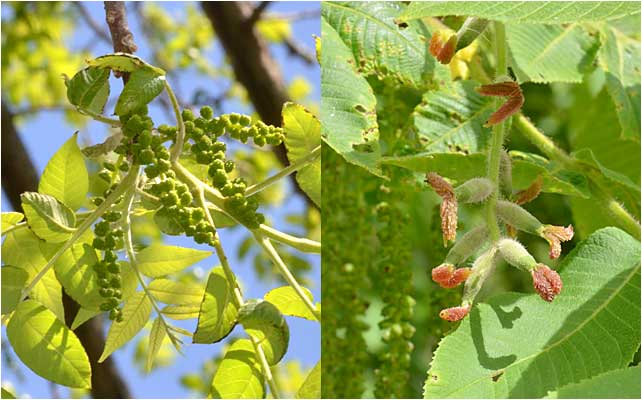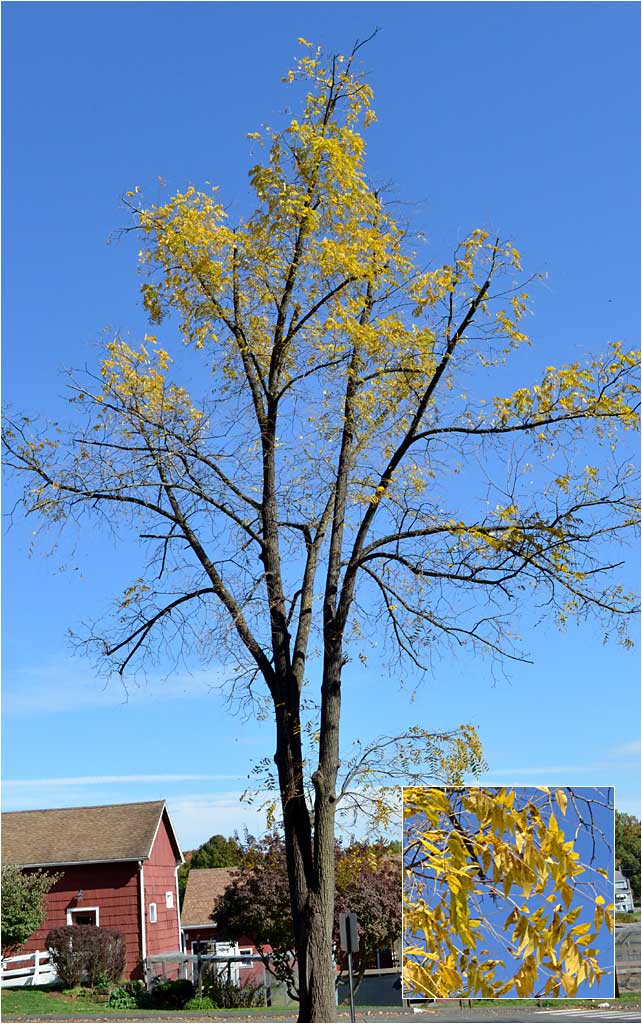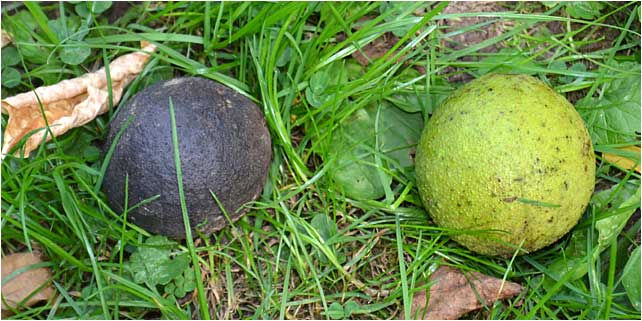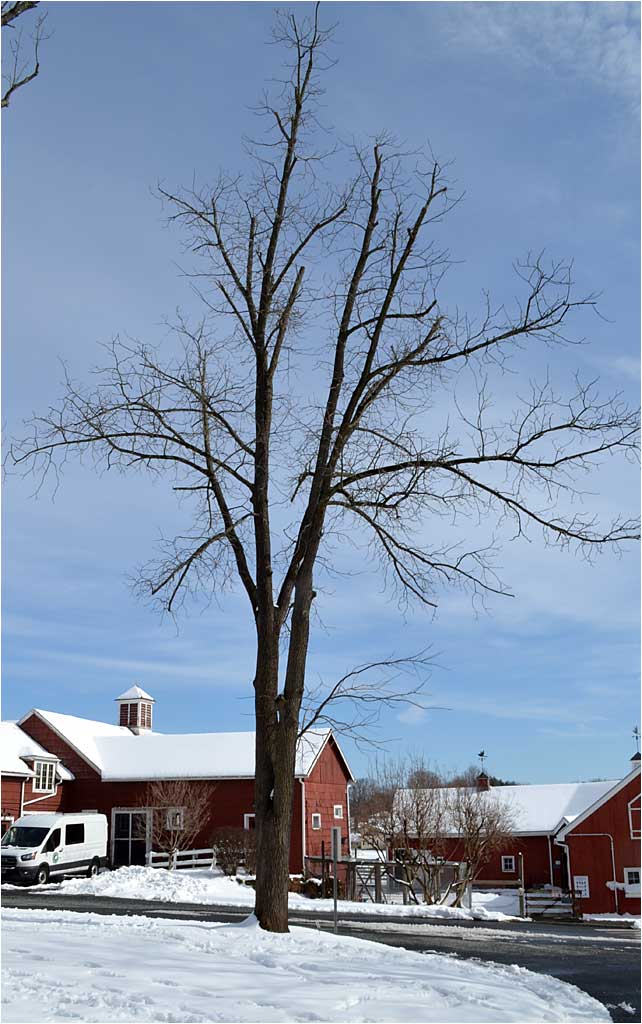6. BLACK WALNUT, Juglans nigra

The Black Walnut is a tall, graceful tree with a slender form. In Spring, it takes on a distinctive green hue that is a blend of emerging foliage and both male/female flowers.
FLOWERS: MALE & FEMALE

Juglans nigra is a monoecious tree - male and female flowers appear on the same tree. Top left are the male pollinators, called catkins. They are easy to see. The female flowers are smaller, harder to see, and start out green before turning the red shown above.
SUMMER
 During Summer, the Black Walnut is a showy tree with its large, compound leaves and slender canopy. The bark is tightly furrowed and gets darker with age - one of the reasons it is called "Black" Walnut.
During Summer, the Black Walnut is a showy tree with its large, compound leaves and slender canopy. The bark is tightly furrowed and gets darker with age - one of the reasons it is called "Black" Walnut.
LEAF, FRUIT

Black Walnut trees have large, compound leaves composed of 23 leaflets. The leaflets are arranged in opposite fashion. The fruit grows during the summer, reaching the size of a tennis ball in good years. You will find the fruit singly, in pairs, and small clusters.
FALL

The large leaves turn a golden color in fall. In some years, the tree remains quite full during this season, and in other years it tends to drop its leaves early. Notice the dark bark.
FRUIT: BLACK WALNUTS

A common scene as the leaves change - the large fruits of the Black Walnut. The fruit is green when it falls, but quickly ripens to this dark color (another reason it is called Black Walnut). Technically, this fruit is called a drupe, and the actual nut is inside the drupe.
WINTER

The Black Walnut showcases its dark bark, soaring branches, and slender canopy during the winter months.